How Much Does It Cost To Replace a Water Pump In a Car In 2023?
-
- Last updated:
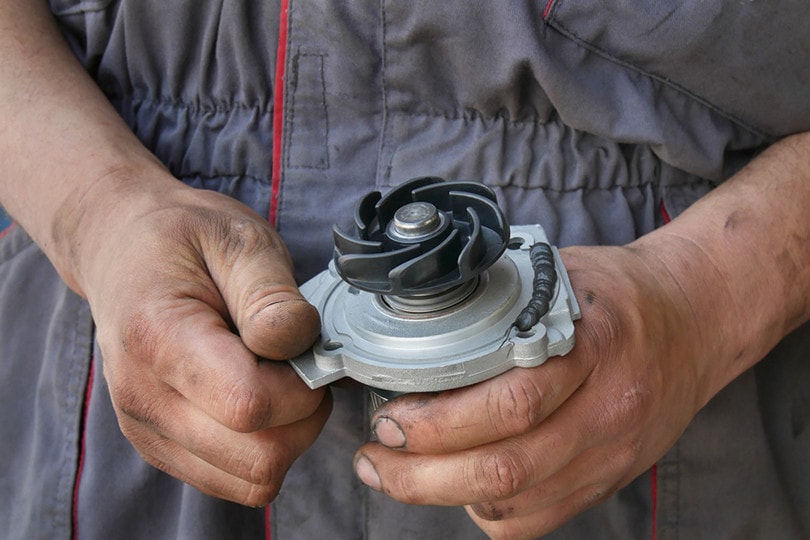
A bad water pump sounds like a scary repair. If you find your engine leaking fluid and struggling to maintain its temperature you could have a bad pump on your hands. There is good news and bad news when this happens. The good news is that repairing the water pump is not as costly as replacing other important engine parts like the alternator or transmission. The bad news is that the water pump has to be replaced when it goes bad or it can ruin your engine. So, there is no procrastinating about this fix.
We will cover the importance of your car’s water pump, the amount you can expect to pay for a new one, and some additional costs that might come your way during the course of the repair.

A Car’s Water Pump Is Extremely Important
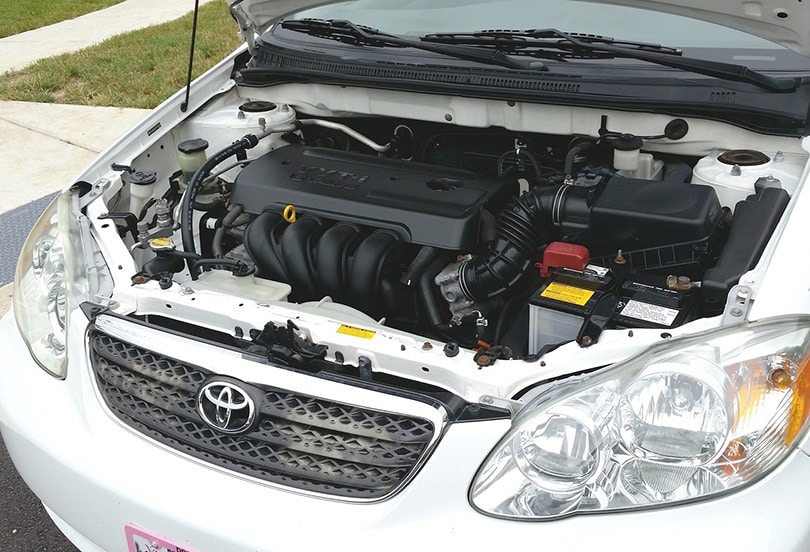
The water pump is not often a part of the engine that rapidly comes to mind, but it is a crucial part of any car. The pump helps to push water or coolant through the system which keeps your engine running at an appropriate temperature. Without a water pump, an engine will overheat very quickly. The pump is also needed to make sure that the water keeps moving through the engine. If the water sits in hot spots for too long, it can boil away and turn to steam which will eventually dry out and damage your system.
If you suspect you have a bad water pump, it is extremely important to diagnose the problem and get a fix scheduled right away. Neglecting your water pump can have severe consequences for your car.
Cost To Replace a Car Water Pump
Water pumps are not the most expensive part to fix in the engine, but they aren’t cheap either. The average cost to replace a water pump is $625. That number includes labor. The cost of parts varies greatly depending on the make and model of your individual vehicle. The cheapest pumps can be found for as little as $200, while some pumps can run as high as $500.
One thing to note about water pumps is that there are a lot of off-brand parts that have much lower reliability scores than factory parts. Most factory pumps are rated for 100,000 miles, but they might be more expensive than an aftermarket part that is only rated for 30,000 miles. That is something to keep in mind while shopping for new water pumps. Generally, you do not want a water pump to go bad more than once because of the harm it can cause to your engine.
Labor costs run between $200 and $350 for a water pump installation. Again, this will depend heavily on your local mechanic and the make of your vehicle. A Lexus being serviced in Chicago is going to cost more than an old pickup truck being serviced in Atlanta. Check your local mechanic shops for more precise information.
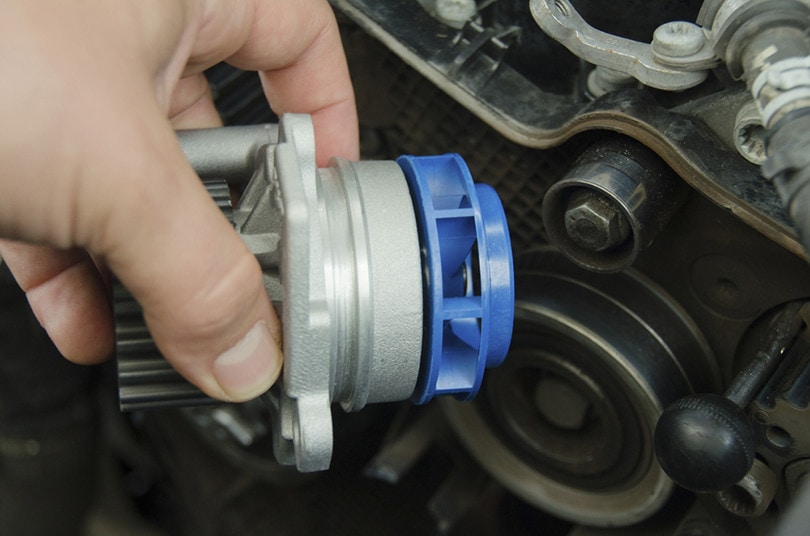
Average Cost of Water Pump Replacement
| Costs | Low | High | Average |
| Water Pump | $200 | $500 | $350 |
| Labor | $225 | $350 | $275 |
| Combined | $425 | $850 | $625 |
Additional Costs
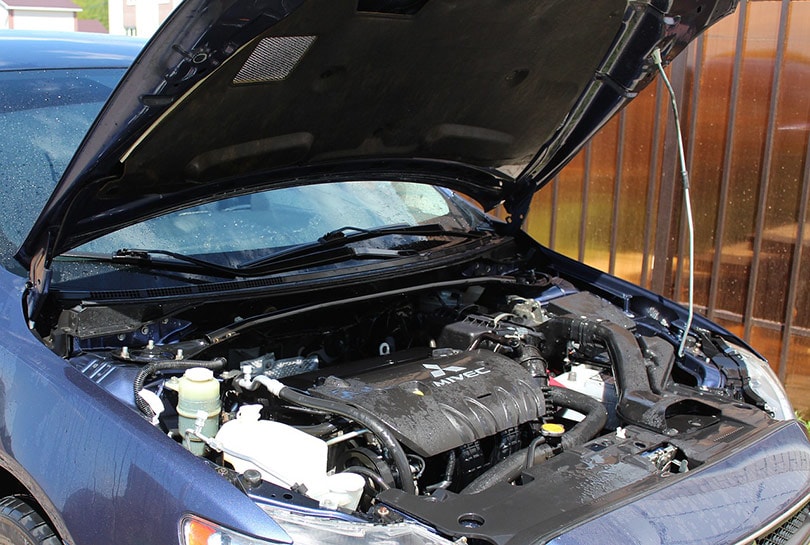
Belts
One of the things that can get messed up when a water pump goes bad are the belts in the engine. Engines are not designed to run with water in them, and if you have a leaky pump that is spraying water into the engine block, it will mess up your timing belts. When the belts get wet, it changes their weight and density, which can throw them off. A leaky water pump will often require you to have your timing belts checked to make sure they weren’t thrown off too badly.
Belts are a fairly cheap part of the engine to repair, with prices running from $20 to $100 on average.
Radiator Reservoir
Sometimes, a bad water pump can lead to problems with the reservoir in the engine. If your pump has leaked out all of the fluid from the system, it can leave the radiator dry. A dry radiator will contract and expand much more than one with fluid in it. Many reservoir tanks are made of plastic, and this expanding and contracting can lead to cracks and busted seals.
The cost to replace a radiator reservoir runs around $400. The tanks themselves are $350, and labor is between $50 and $75. If you neglected your water pump for any amount of time, there is a chance you could have damaged the reservoir as well.
Coolant System Flush
Lastly, when you get your water pump changed, you probably also want to flush out your coolant system and refill it. A leaky pump can lead to air pockets getting into the coolant system, which is bad for your engine. Old leaky parts can also get contaminated with dirt, dust, and oil. If you are already getting your pump changed, it is probably a good idea to also ask for a full system flush as well.
The cost of a coolant flush is around $150 on average.
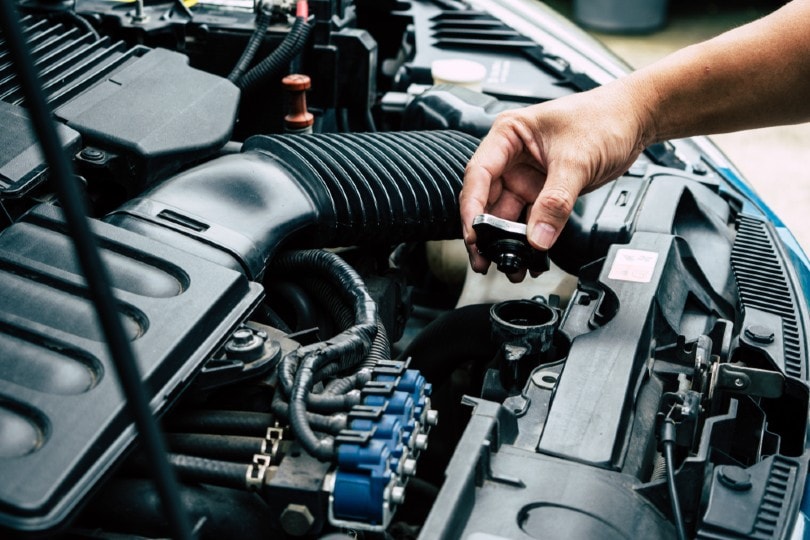
How Often Does Your Vehicle’s Water Pump Need To Be Replaced?
Luckily, water pumps do not go bad very often. Unlike other parts of the car like the transmission or tires, the pump does not suffer from as much physical wear and tear. The water does not strain the pump as much as daily use stresses other parts of the car. This means that once a pump is replaced, you probably won’t have to replace it again. Water pumps rarely go bad on cars, and if it goes bad once, it should not go bad again.
Most factory water pumps are designed to last at least 100,000 miles, but many last longer than that.
That being said, a vehicle’s water pump has to be replaced every time it goes bad. If the pump is not bad, don’t worry about it. You only need to replace the pump if something goes wrong with the coolant system. They are not like tires or oil, where preemptive maintenance will do much good.
Can You Drive a Car With a Bad Water Pump?
For very short distances, yes. A car will run with a bad water pump, but it will overheat. Overheating an engine can cause critical damage to the car and result in thousands of dollars in repairs or even a total loss. You should never drive a car that is overheating or running near the recommended heat threshold. If you suspect you have a bad water pump or are experiencing frequent overheating, you should stop driving your car and plan on taking it in to be evaluated.

A Leaky Pump vs. Dead Pump
There is a difference between a leaky pump and a pump that is not moving any liquid. A leaky pump loses water when it is functioning, which leaves your car without critical coolant. But even if the pump is leaking, it could still be pumping. This gives you the opportunity to refill the coolant on your own until you can get the pump replaced. Signs of a leaky water pump are water that comes out from the bottom of the engine and wet belts inside the engine. A leaky water pump will still push coolant to the engine but with diminishing efficiency. If you spot a leak but your car hasn’t started overheating yet, you can check your coolant levels and adjust accordingly until you can get the car into the shop.
Sometimes the coolant pump will go completely dead. If this happens, the pump won’t work at all. This will leave your engine without any circulation in the coolant system. You will know pretty quickly if that is the case because the car will start to overheat after a short period of time. A dead pump needs to be tended to immediately because a car cannot run without coolant circulation.
Featured Image Credit: sima, Shutterstock
Contents

